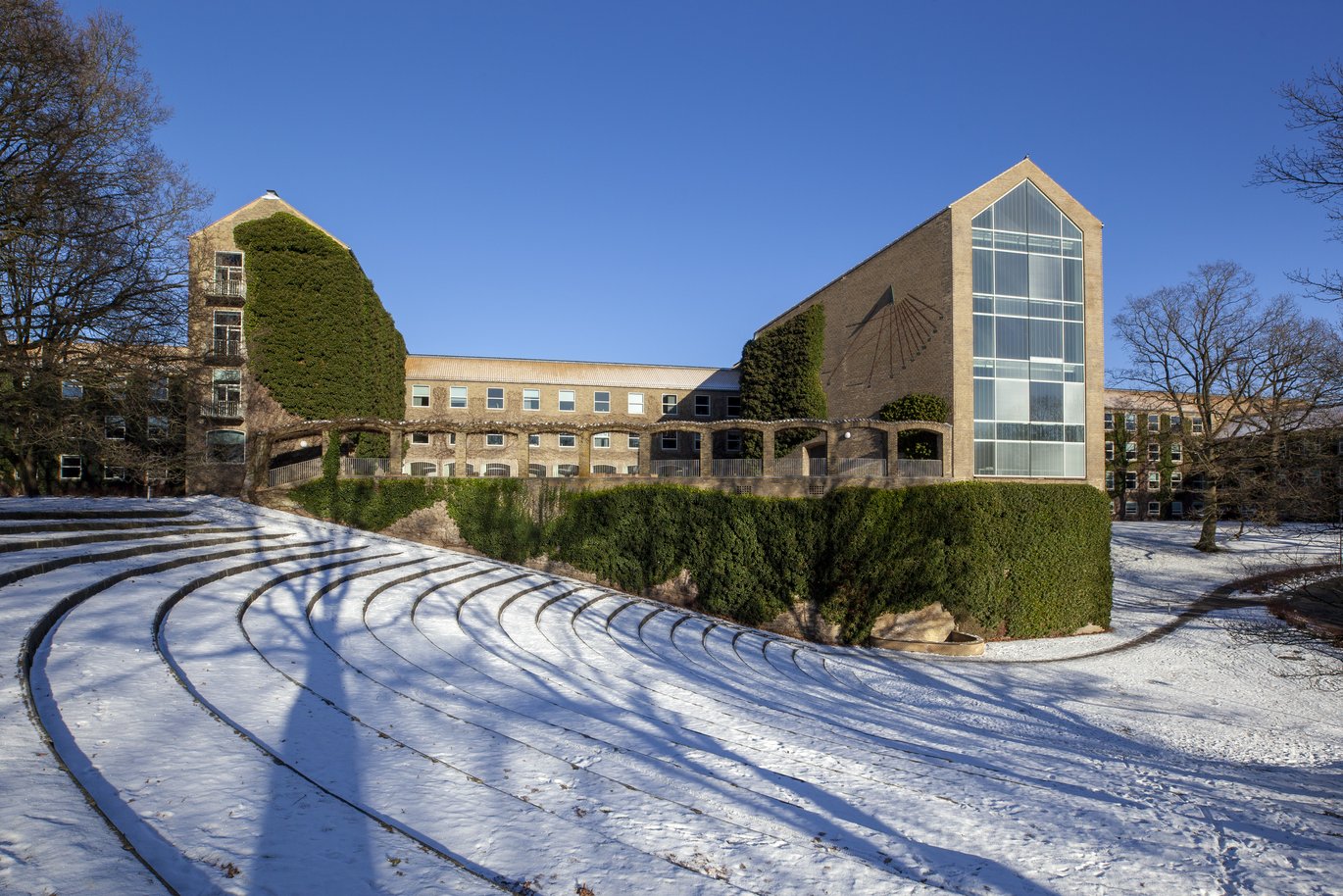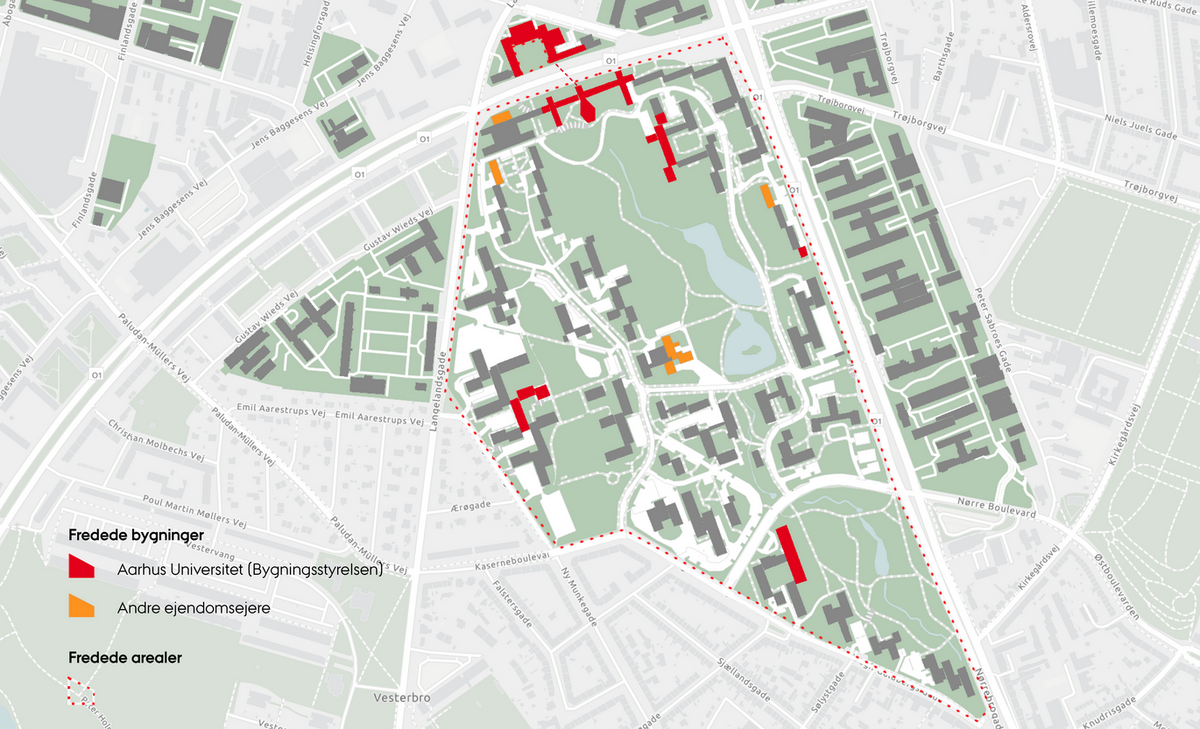The verdict is in: Parts of Aarhus University have been listed
The Agency for Culture and Palaces has decided in favor of listing the University Park and Vennelystparken as works of landscape architecture along with nine building complexes consisting of 26 buildings. The decision is regrettable, according to Rector Brian Bech Nielsen, who fears that listing parts of campus may put a brake on the university’s development.

About the decision to list parts of Aarhus University
The Agency for Culture and Palaces nominated the affected buildings and grounds at Aarhus University for listing on the background of a recommendation from an advisory expert panel, Det Særlige Bygningssyn. The idea was first proposed by the national association for the preservation of buildings and landscapes of cultural significance, Landsforeningen for Bygnings- og Landskabskultur.
The Agency for Culture and Palaces has the power to list buildings that possess a unique architectural or cultural heritage value in order to preserve and safeguard Denmark’s cultural heritage for generations to come. The agency can confer listed status, but in the event that the owner of a property appeals the decision, the minister of culture has the final say.
In Aarhus University’s case, the listing applies to a larger area on the main campus, and not just to individual buildings. Holmen in Copenhagen is a similar case of a listing that applies to a larger area.
Documentation:
On the background of a proposal from Det Særlige Bygningssyn, the Agency for Culture and Palaces has decided to list parts of Aarhus University. This means that the University Park and Vennelystparken are now listed as independent works of landscape architecture. In addition, nine building complexes have been listed, a total of 26 buildings. Specifically, the listing applies to the AU’s first department building, the Museum of Natural History, the Main Building (including the Main Hall), the ‘book tower’ (the main library), the School of Dentistry, the Stakladen complex, the Department of Mathematics and residence halls 4 and 7, including the provost’s residence..
Det Særlige Bygningsyn’s argument in favor of listing was that “Aarhus University is a sublime work of landscape architecture that, together with a a number of unique buildings, exemplifies a decisive epoch in the history of Danish architecture.”
Merete Lind Mikkelsen, who heads a unit at the Agency for Culture and Palaces, agrees. In a press release from the agency, she is quoted as saying:
“Aarhus University is an example of what long-term architectural planning means for buildings, neighborhoods and cities. The construction of this independent work of landscape architecture and the buildings that are now listed spans from the 1930s to the 1960s, while the fundamental concept for the landscape and the buildings has been maintained over time.”
AU’s rector disagrees with the listing
During the consultation period, Aarhus University protested the proposed listing, arguing that it could potentially make it difficult for the university to continue to develop as an education institution serving 40,000 students – and a research institution and workplace for 8,500 staff.
Aarhus University: Listing, no thanks!
Rector Brian Bech Nielsen finds the decision to list parts of the university regrettable:
“The Agency for Culture and Palaces understands the unique qualities of Aarhus University, and we share the goal of taking good care of our beautiful university,” he is quoted as saying in an article on medarbejdere.au.dk. “But I disagree with their decision. For decades, we have successfully developed our campus with respect for the history and architecture of the site – creating a world-class university and taking care of it at the same time. We don’t need the ‘listed’ status to do that.”
The rector is also concerned about the consequences, he said:
“We’re in fierce international competition to attract the best students and staff, and the prospect that simple changes like moving a wall, fixing a roof or replacing can become long, costly processes worries me. Not to mention the risk that the listing might prevent us from establishing new labs, for example.”
If Oxford and Cambridge can, AU can too
Mikkelsen does not believe that the listing will prevent the university from developing, and cites the example of listed universities in other countries – which have nevertheless climbed to the top of the international university rankings. In a press release, she is quoted as saying:
"Of course Aarhus University must be able to develop as a modern research and study environment, even though it is also a unique work of architecture and cultural history. We are familiar with examples of development within the constraints of a listing from abroad, where the universities in Oxford and Cambridge have a lot of listed buildings and are still among the world’s best universities. The listing of these parts of the university also includes the use of the parks, such as the students’ legendary Regatta in the University Park lake, which will naturally be able to continue as before.”
In the decision, the agency also stresses that the listing only applies to a few of the university’s ‘research-intensive’ buildings.
The listing is in effect: the parts of Aarhus University included in the listing have considered as listed since the recommendation to list these areas was made. Aarhus University is now waiting for the agency to provide more details on the conditions for the future collaboration.
The university has four weeks to appeal the decision. If the university decides to do so, the final decision will rest with the minister of culture, Jakob Engel-Schmidt.


